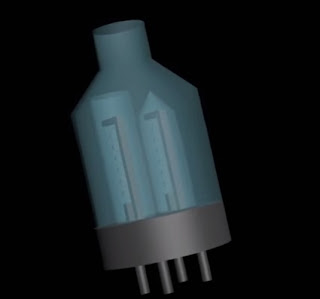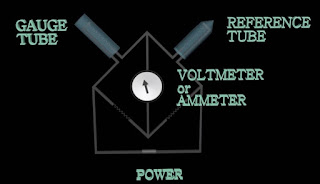What is Pirani Gauge ? Advantages,Disadvantages and Application of Pirani Gauge
Pirani Gauge
Pirani gauge is a device used to measure low vacuum in a pressure range from 0.5 Torr to 10−4 Torr.
Working Principle and Construction of Pirani gauge
Pirani gauge consist of two tungsten filaments,a power source and a volt meter or ammeter.One of the filaments is placed to gauge tube and is exposed to the environment where the pressure is measured.The other filament is placed in sealed reference tube filled with gas constant pressure.The filaments are heated up by passing current through them.As the gas molecules interact with the filament heat is carried away.The higher the pressure the more interaction with gas molecules and more heat is taken from the filament. The electrical resistance of the filament depends on the filaments temperature.Therefor the filaments electrical resistance depends on the pressure in the chamber.
The electrical resistance is measured by following the ohms law.It can be done in two ways.
Either keep the current constant and measure voltage or keep voltage constant and measure the current.
V=I/R – Ohms Law
How Pirani Gauge work – Animation
Application of Pirani Gauge
Low Vacuum Pressure measurement
Advantages of Pirani Gauge
Pirani gauge is often preferred over thermocouple gauge because it is 10 times faster and wider range of pressure can be measured.
Inexpensive
Rugged
Response to pressure change is good.
Pressure and resistance relation is linear for the range of use.
Reading can be taken remotely.
Disadvantages of Pirani Gauge
Frequent Calibration is required
Electric power is must for operation







